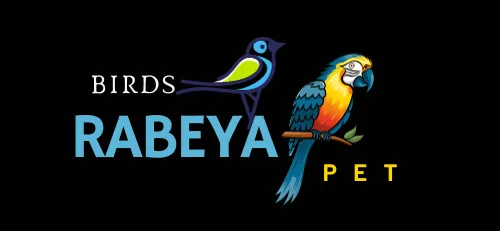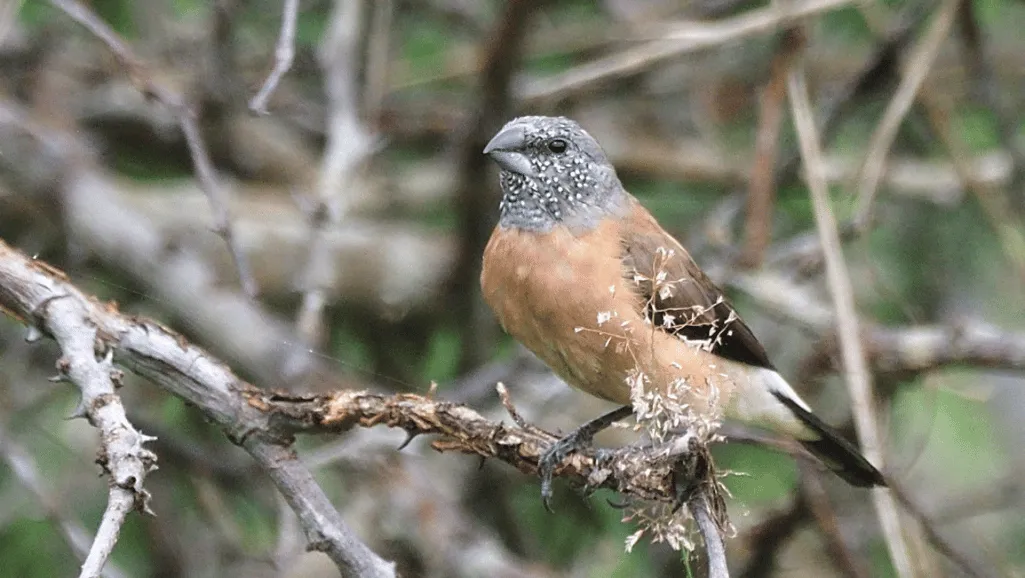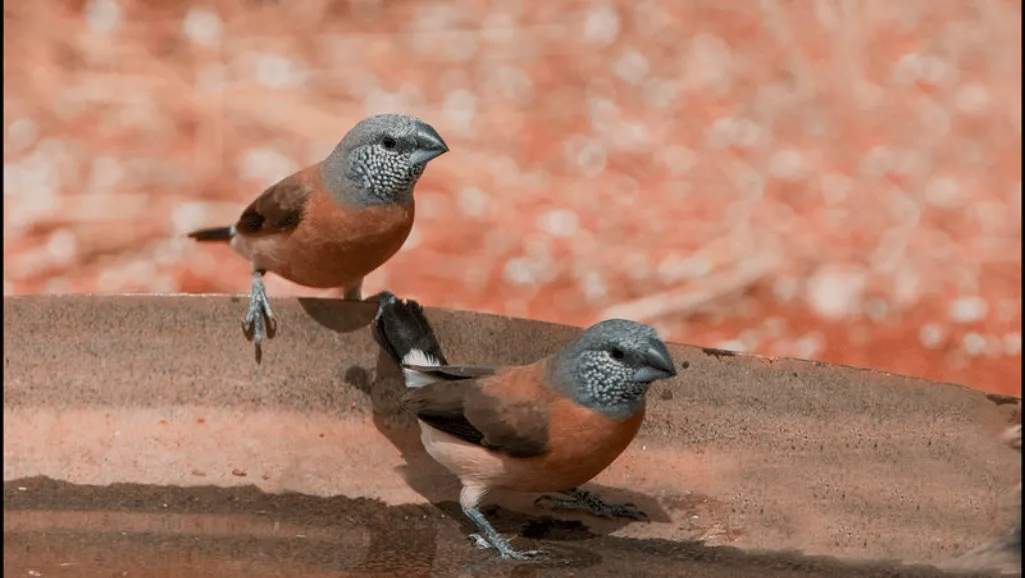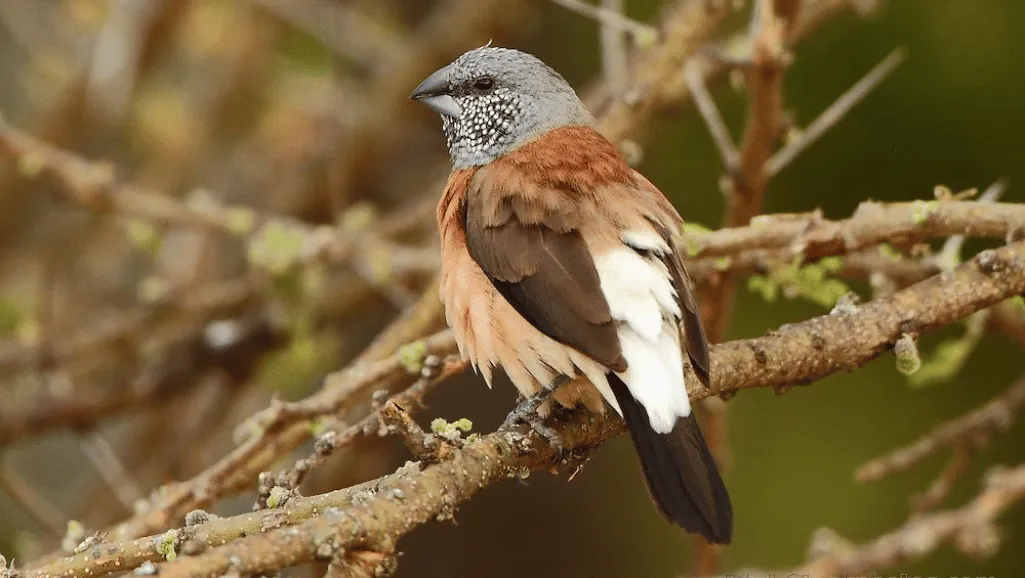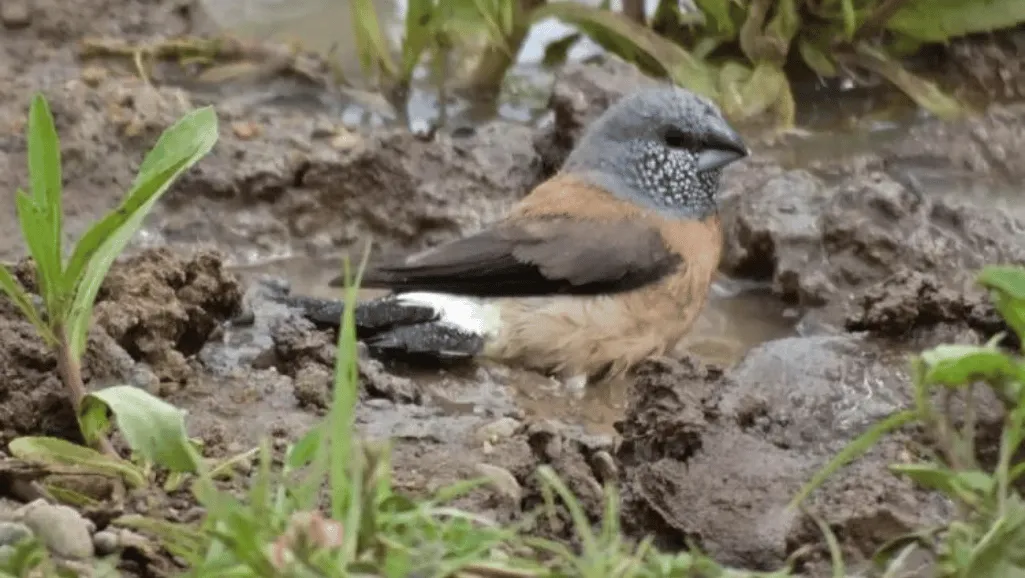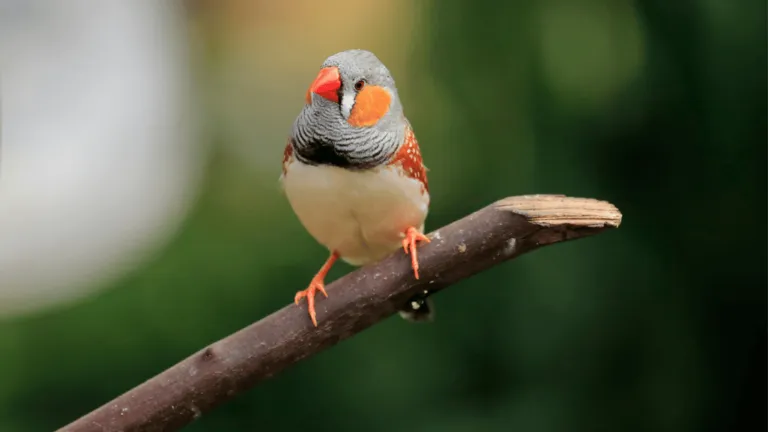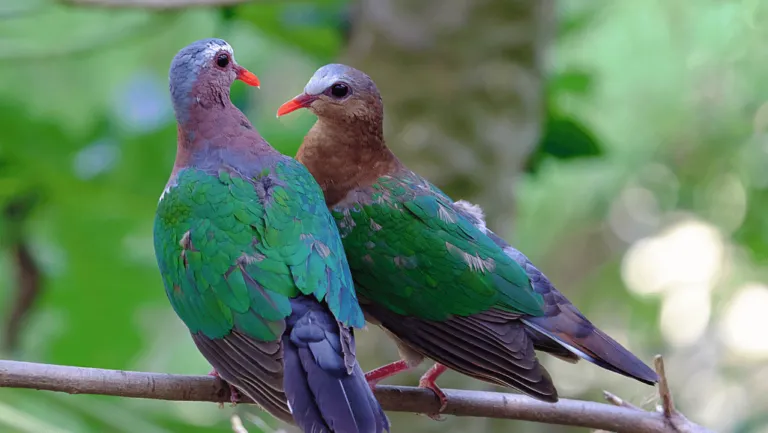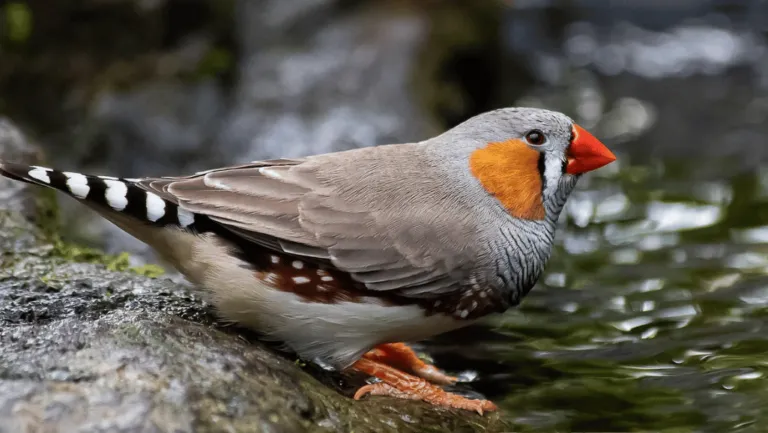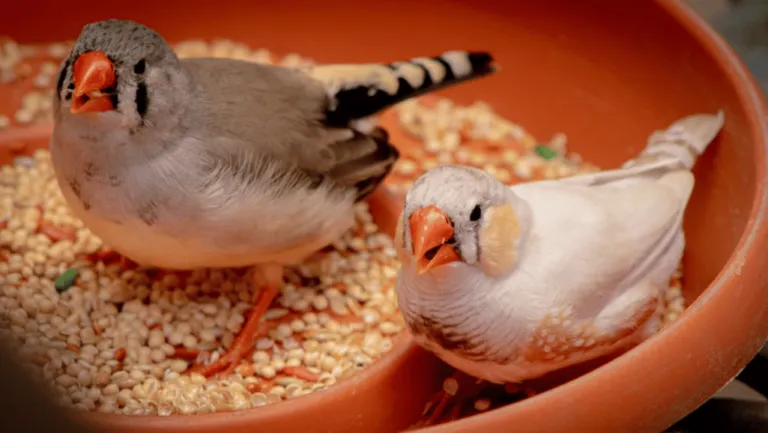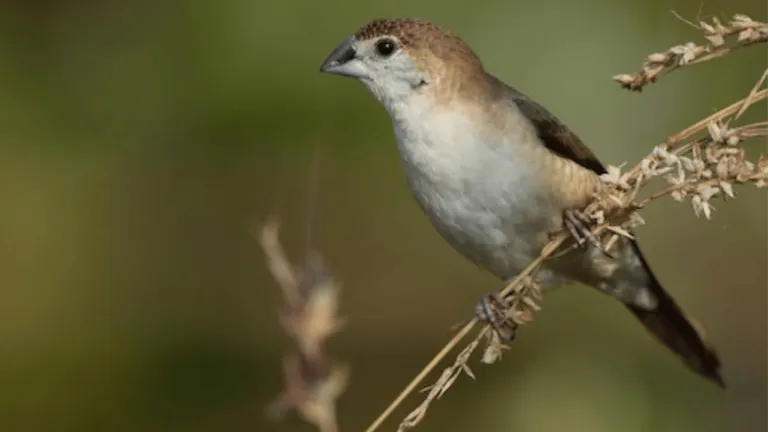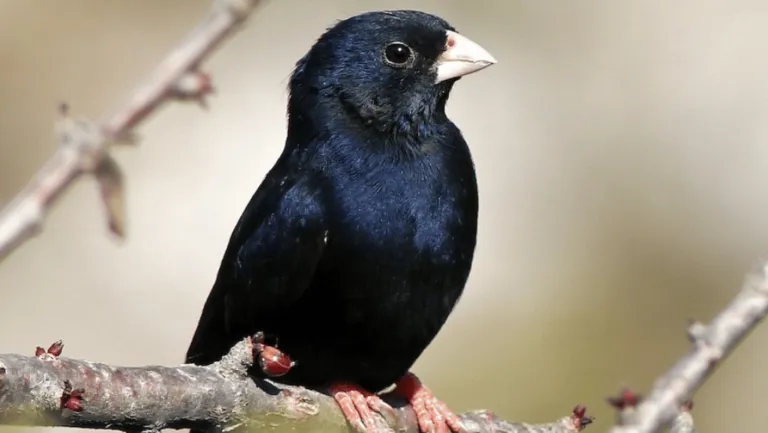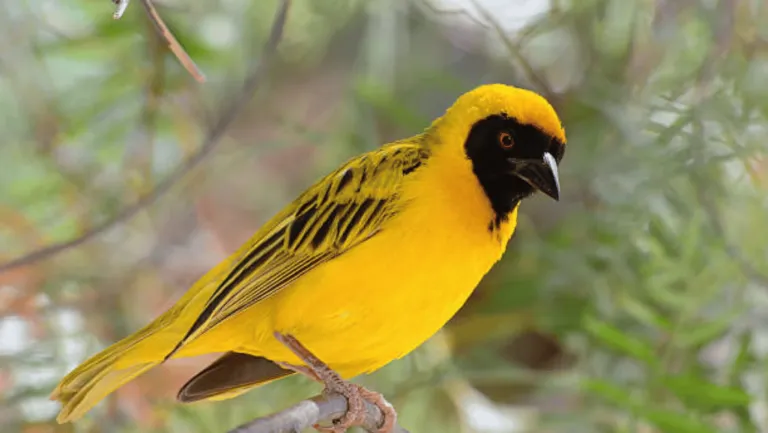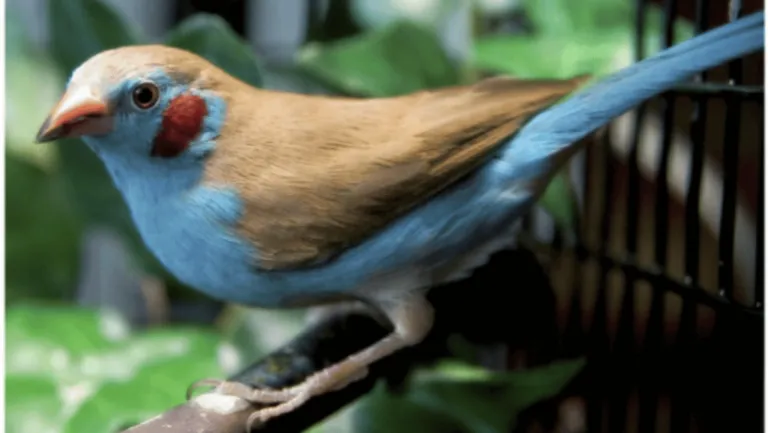Welcome to our exploration of the Grey Headed Silverbill, a fascinating finch species that stands out for its distinctive silver crown. As a member of the Estrildidae family, this small bird belongs to a diverse group of finches found across Africa. Known for its melodious call and gregarious nature, the Grey Headed Silverbill is a gem among finch enthusiasts and birdwatchers.
Renowned for its unique feature, the silver crown adds a touch of elegance to this already charming bird. With its silver-plated head, the Grey Headed Silverbill captures the attention of observers and stands out among other finch species. Its stunning appearance and delightful song make it a joy to behold and listen to in its natural habitat.
Key Takeaways:
- The Grey Headed Silverbill is a finch species with a silver crown.
- It belongs to the Estrildidae family, which exhibits avian biodiversity.
- Finches, including the Grey Headed Silverbill, inhabit diverse habitats such as grasslands and woodlands.
- They exhibit interesting breeding habits, including communal nesting and clutch sizes of five to ten eggs.
- Understanding and conserving finches, including the Grey Headed Silverbill, is essential for the preservation of biodiversity.
Avian Biodiversity: Exploring the Diversity of Finch Species
The family Estrildidae, to which the Grey Headed Silverbill belongs, is known for its avian biodiversity. With approximately 146 species divided into 34 genera, it is a diverse family of finches. Finches, classified as passerine birds, are renowned for their perching and song capabilities. The Grey Headed Silverbill represents just one of the many unique finch species found in the world, showcasing the remarkable variety within the family.
Finches, known for their vibrant plumage and captivating melodies, have captivated the curiosity of bird enthusiasts and researchers alike. Their diverse range of colors, beak shapes, and behaviors make finches an exciting subject of study and observation.
Passerine Birds: Masters of Perching and Melodious Tunes
Finches, along with other passerine birds, possess unique adaptations that contribute to their remarkable capabilities. Their feet and claws are specifically designed for perching, allowing them to effortlessly perch on branches and wires. This ability is crucial for various activities such as feeding, social interaction, and nest building.
One of the remarkable features of finches is their melodic songs. These passerine birds produce intricate tunes, often used for communication, attracting mates, or establishing territorial boundaries. The melodious nature of finches adds to their allure and makes them a favorite among birdwatchers and nature enthusiasts.
The Grey Headed Silverbill and the Richness of Finch Species
The Grey Headed Silverbill, a member of the Estrildidae family, epitomizes the striking diversity present within the world of finches. With its distinctive silver crown and melodious call, it represents the beauty and allure of these avian wonders. However, the Grey Headed Silverbill is just one of the many intriguing finch species that exist across different continents and habitats.
From the vibrant Gouldian finches of Australia to the delightful Zebra finches found in the grasslands of Africa and Asia, finches exhibit a wide array of colors, patterns, and behaviors. Each species has its unique adaptations and ecological niche, contributing to the overall avian biodiversity across the globe.
The image above showcases the incredible avian biodiversity within the finch family, highlighting the various species and their distinctive features. It serves as a visual reminder of the remarkable diversity and beauty present in finch species.
As we delve deeper into the world of finches, we uncover a rich tapestry of avian biodiversity. Each species contributes to the intricate web of life, playing a vital role in maintaining ecosystem balance and ensuring the survival of these enchanting creatures for generations to come.
Finch Species Habitat: From Grasslands to Woodlands
Finch species, including the Grey Headed Silverbill, are highly adaptable and can be found in a wide range of habitats, showcasing their ability to thrive in diverse environments. These habitats include:
1. Grasslands: Finches are commonly found in grassland ecosystems, where they can take advantage of the open spaces and abundant vegetation. The grassland habitat provides a variety of food sources, such as grass seeds, insects, and other small invertebrates.
2. Forests: Many finch species, including the Grey Headed Silverbill, can be found in forested areas. Forests provide a rich and diverse environment, offering a wide range of food resources, nesting sites, and protection from predators.
3. Woodlands: Finch species also inhabit woodlands, which are characterized by a mixture of trees, shrubs, and open spaces. Woodland habitats provide a variety of food sources, including seeds, berries, and insects.
While grasslands, forests, and woodlands are the primary habitats for finch species, these adaptable birds can also be found in other environments such as deserts, scrublands, and even agricultural land. This versatility allows finches to find suitable food and shelter in various settings, ensuring their survival and successful reproduction.
| Habitat | Characteristics |
|---|---|
| Grasslands | – Open spaces – Abundant vegetation – Grass seeds, insects as food sources |
| Forests | – Diverse environment – Rich food resources – Nesting sites – Protection from predators |
| Woodlands | – Mixture of trees, shrubs, and open spaces – Varied food sources – Seeds, berries, insects as food sources |
| Other Environments | – Deserts – Scrublands – Agricultural land |
Note: The table above summarizes the main characteristics of finch habitats, including grasslands, forests, woodlands, and other environments where finch species can be found.
Finch Breeding Habits: From Communal Nests to Clutch Sizes
Estrildid finches, including the Grey Headed Silverbill, have fascinating breeding habits that contribute to their successful reproduction and the growth of their populations. One notable aspect of their breeding behavior is the creation of dome-shaped nests, providing a safe and secure environment for their eggs and hatchlings. However, what sets these finches apart is their propensity for communal nesting sites, where multiple pairs of finches come together to raise their young as a cooperative group.
Communal nests offer several advantages for finches. By sharing the responsibilities of incubation and feeding among multiple pairs, they can increase the overall chances of successful breeding and the survival of their offspring. This social breeding strategy allows for effective utilization of resources and provides mutual assistance and protection, ensuring the collective well-being of the finch community.
The Grey Headed Silverbill, like many other finch species, exhibits this cooperative nesting behavior. These communal nests can be found in various habitats, including trees, shrubs, or even man-made structures, where several nesting pairs build their nests adjacent to one another and rear their young cooperatively.
Another vital aspect of finch breeding habits is their clutch sizes, which refer to the number of eggs laid by the female during each reproductive cycle. The clutch size of the Grey Headed Silverbill and other finches typically ranges from five to ten eggs. This range ensures sufficient genetic diversity and allows for a higher chance of successful breeding and the establishment of thriving populations.
The parenting efforts of both males and females are crucial during the breeding period, as they take turns incubating the eggs and providing food for their hatchlings. This shared responsibility promotes bonding between mates and ensures the best possible care for their offspring.
In conclusion, the breeding habits of Estrildid finches, such as the Grey Headed Silverbill, showcase their remarkable adaptability and social nature. The creation of communal nests and the brood care provided by multiple pairs contribute to the successful reproduction and growth of the finch populations. By understanding these intriguing breeding behaviors, researchers can gain insights into the complex dynamics of finch communities and develop effective conservation strategies to safeguard their future.
| Advantages of Communal Nesting | Clutch Sizes of Finch Species |
|---|---|
|
|
Finch Conservation Status: Understanding the Status of Finches
Finches, like the Grey Headed Silverbill, have varying conservation statuses depending on their specific species. While some finches may be classified as more vulnerable or threatened, others may have stable populations. It is crucial to closely monitor the conservation needs of different finch species to ensure their habitats are effectively protected and managed.
Conservation Status Overview:
| Finch Species | Conservation Status |
|---|---|
| Grey Headed Silverbill | Least Concern |
| Red Siskin | Endangered |
| Gouldian Finch | Vulnerable |
| Hawaiian Finch | Critically Endangered |
| Goldfinch | Least Concern |
The table above provides an overview of the conservation status of various finch species, including the Grey Headed Silverbill. While some species, like the Red Siskin and Gouldian Finch, face significant threats to their population, others, like the Goldfinch, have more stable populations and are considered of least concern.
Efforts are underway to protect and conserve finch populations globally. These efforts include habitat preservation, captive breeding programs, and implementing regulations to prevent illegal trade and habitat destruction.
Threats to Finch Populations:
- Habitat loss due to deforestation and urbanization
- Invasive species impacting breeding habitats
- Climate change and its effects on food availability
- Illegal trapping and trade of certain finch species
These threats have the potential to significantly impact finch populations worldwide. Collaborative conservation efforts and public awareness are crucial in mitigating these threats and ensuring the long-term survival of finches in their natural habitats.
By understanding the conservation status of finches and taking action to protect their habitats, we can play a vital role in safeguarding these unique and diverse bird species for future generations to enjoy.
Finch Migration Patterns: Exploring the Movement of Finches
Migration is a common behavior among many bird species, including some finches. While the Grey Headed Silverbill’s migration patterns are not extensively documented, it is known that some finches migrate seasonally in search of favorable feeding and breeding grounds. Understanding the migration patterns of finches can provide valuable insights into their ecology and habitat requirements.
Seasonal Finch Migration
Finches, like many other bird species, undertake seasonal migrations to optimize their chances of survival and reproduction. These migrations are often driven by changes in food availability, climate conditions, and the need for suitable breeding grounds.
During the breeding season, some finches may migrate from their wintering grounds to areas with abundant food resources and optimal nesting sites. These movements allow them to capitalize on seasonally available resources and minimize competition with resident bird populations. Once the breeding season is over, finches may migrate back to their wintering grounds or move on to different locations.
Migratory Behavior and Strategies
Finches employ various migratory strategies, depending on their species, geographical location, and environmental factors. Some species may embark on long-distance migrations spanning thousands of kilometers, while others undergo shorter migratory journeys. The specific routes, timing, and destinations of finch migrations can vary significantly.
Finches exhibit both diurnal and nocturnal migration patterns. Diurnal migrants are active during the day and rely on visual cues, favorable wind conditions, and landmarks to guide their journey. Nocturnal migrants, on the other hand, navigate using celestial cues, such as the stars and Earth’s magnetic field, to ensure their migration occurs during darkness and decreases the risk of predation.
Factors Influencing Finch Migration
Several factors influence the migration patterns of finches:
- Food availability: Finches often migrate to areas with abundant food resources, such as insect outbreaks, flowering plants, or fruit-bearing trees.
- Climate conditions: Changes in temperature, precipitation, and daylight duration influence finches’ decision to migrate.
- Breeding requirements: Finch species with specific breeding habitat needs may migrate to regions where suitable nesting sites and mates are available.
- Competition: Avoidance of competition with other bird species or finch populations can drive migratory behavior.
| Migration Pattern | Examples |
|---|---|
| Long-distance migration | Artic warbler, Brambling, American goldfinch |
| Altitudinal migration | Black-headed grosbeak, Yellow fronted canary |
| Irruptive migration | Pine siskin, Common redpoll, Evening grosbeak |
| Nomadic migration | Crossbill, Evening grosbeak |
Table: Examples of Finch Migration Patterns and Associated Species
By studying finch migration patterns, researchers can gain valuable insights into the ecological dynamics and habitat requirements of these fascinating birds. Understanding the factors driving their movements can aid in the conservation of finch populations, ensuring the preservation of their distinct behaviors and genetic diversity.
Birdwatching Finches: Observing the Beauty of Finch Species
Finches, including the Grey Headed Silverbill, are a popular attraction for birdwatchers around the world. These small birds with their vibrant colors, unique behaviors, and melodious songs are a delight to observe in their natural habitats. Whether exploring the forests, grasslands, or even urban gardens, birdwatching enthusiasts have ample opportunities to witness the beauty and diversity of these fascinating avian marvels.
One of the most appealing aspects of birdwatching finches is their colorful plumage. From the vibrant yellows and oranges of the Gouldian Finch to the striking combination of black, white, and red in the Red-headed Finch, these birds are a visual delight. Their feathers showcase a wide range of patterns and shades, making each species a unique spectacle to behold.
In addition to their stunning appearance, finches exhibit fascinating behaviors that captivate birdwatchers. Some species, like the Zebra Finch, engage in complex courtship rituals, showcasing their elaborate mating displays. Others, such as the Java Sparrow, are known for their acrobatic flying patterns and synchronized group movements. Observing these behaviors in the wild allows birdwatchers to appreciate the intricacies of finch life.
Another reason why birdwatchers are drawn to observing finches is their enchanting songs. Each species has its own distinctive melodies and calls. The melodious tunes of the European Goldfinch, for example, are a common soundtrack in European gardens, while the red and purple-colored Purple Finch charms with its sweet warbles and trills. Witnessing these vocal performances firsthand adds another dimension to the birdwatching experience.
To enhance the birdwatching expedition, dedicated birdwatchers often equip themselves with binoculars or spotting scopes to get a closer look at finches in their natural habitat. These tools allow enthusiasts to appreciate the finer details of finch plumage, behavior, and even nesting activities, ensuring a more immersive birdwatching experience.
Overall, birdwatching finches offers a unique and rewarding opportunity to connect with nature and appreciate the beauty of these captivating creatures. Whether it’s observing their vibrant plumage, fascinating behaviors, or melodic songs, exploring the world of finches provides a captivating and enriching experience for bird enthusiasts everywhere.
Finch Ornithology: Exploring the Study of Finches
Finch ornithology is a fascinating branch of scientific research that delves into the intricate world of finches. Ornithologists dedicate their efforts to closely examining the behavior, ecology, morphology, and distribution of various finch species to gain a comprehensive understanding of their biology and conservation needs. Through meticulous research, observation, and analysis, ornithologists contribute valuable insights to the collective knowledge of finches, enabling us to make informed decisions and take appropriate actions for their conservation.
The Behavior of Finches
Understanding the behavior of finches is essential for comprehending their ecological roles within their respective habitats. Ornithologists study various aspects of their behavior, such as feeding patterns, mating rituals, nesting habits, and social interactions. By analyzing these behaviors, scientists can unveil the intricate dynamics of finch communities and gain insights into their adaptation strategies.
The Ecology of Finches
The ecological study of finches focuses on their interactions with the environment and other species. Ornithologists explore the diverse habitats in which finches thrive, ranging from grasslands and forests to arid deserts and urban environments. Through ecological research, scientists gain a deeper understanding of the critical role finches play in maintaining ecosystem balance and the specific environmental factors that influence their survival and reproductive success.
The Morphology of Finches
Morphology, the study of the physical characteristics of organisms, is crucial in understanding the adaptations and evolutionary processes of finches. Ornithologists examine the unique beak shapes, coloration patterns, wing structures, and other anatomical features of different finch species. By analyzing these morphological traits, scientists can unravel the relationships between form and function, revealing how finches have evolved to exploit specific food sources, navigate their habitats, and survive in different climates.
The Distribution of Finches
Ornithologists investigate the distribution patterns of finch species across different geographic regions. By mapping their ranges and studying factors such as climate, habitat availability, and geographical barriers, scientists gain insights into the factors that shape finch distribution. This information is vital for designing effective conservation strategies and identifying areas of high priority for the protection of threatened finch populations.
Conclusion
The Grey Headed Silverbill Finch, with its silver crown and melodious call, exemplifies the remarkable diversity and beauty found among finch species. These charming seed-eating songbirds have captured the attention of birdwatchers and researchers alike, offering a fascinating glimpse into their unique habitats, breeding habits, and migration patterns.
Through ongoing observation and dedicated conservation efforts, we can ensure the well-being and preservation of these precious finch species for generations to come. By protecting their diverse habitats and understanding their ecological needs, we can foster a sustainable environment that supports not only finches but also the entire avian ecosystem.
As we continue to explore the world of finches, we uncover the intricate web of life and the innumerable wonders it holds. These small but captivating birds have much to teach us about adaptation, resilience, and the delicate balance of nature. Let us appreciate and cherish these beautiful creatures, playing our part in safeguarding their future.
FAQ
What is the Grey Headed Silverbill?
The Grey Headed Silverbill is a small finch species known for its unique silver crown.
How many species of finches are there in the Estrildidae family?
The Estrildidae family consists of approximately 146 species divided into 34 genera.
Where is the Grey Headed Silverbill native to?
The Grey Headed Silverbill is native to Africa and has a wide distribution across the continent.
What habitats do finch species, including the Grey Headed Silverbill, inhabit?
Finch species can be found in diverse environments such as grasslands, forests, woodlands, deserts, scrublands, and agricultural land.
What are the breeding habits of estrildid finches, like the Grey Headed Silverbill?
Estrildid finches, including the Grey Headed Silverbill, are known to create dome-shaped nests and often have communal nesting sites where multiple pairs raise their young together.
What is the conservation status of finches?
The conservation status of finches varies depending on the specific species, with some being more vulnerable and others having stable populations. Close monitoring is essential to protect their habitats effectively.
Do finches, like the Grey Headed Silverbill, migrate?
While the migration patterns of the Grey Headed Silverbill are not extensively documented, some finches do migrate seasonally in search of favorable feeding and breeding grounds.
Why are finches popular among birdwatchers?
Finches, with their colorful plumage, unique behaviors, and melodious songs, are popular subjects for birdwatchers looking to appreciate the beauty and diversity of these avian marvels.
What is finch ornithology?
Finch ornithology is the branch of science dedicated to studying finches’ behavior, ecology, morphology, and distribution to contribute to their conservation efforts.

